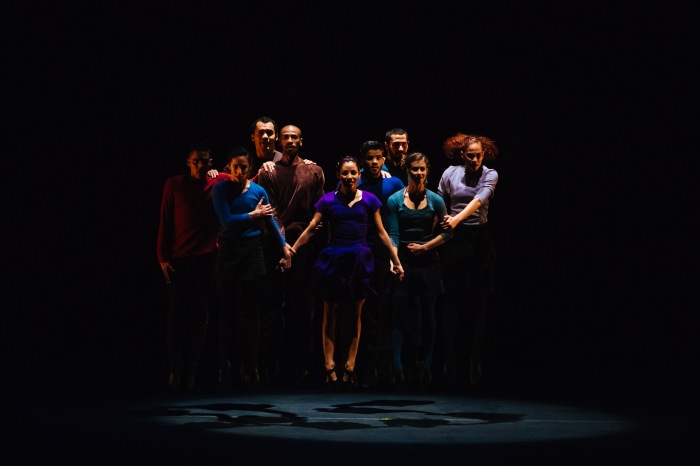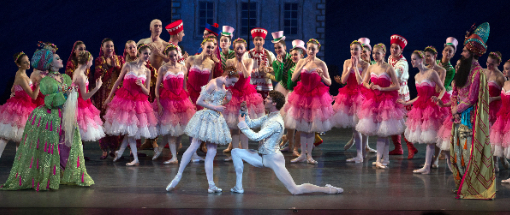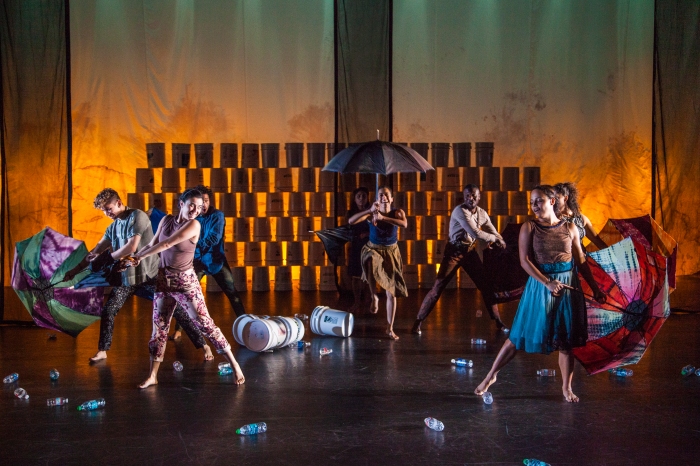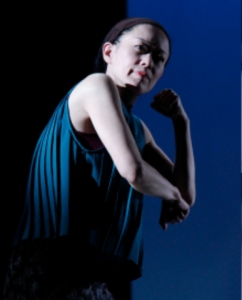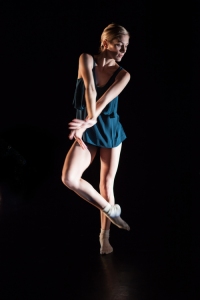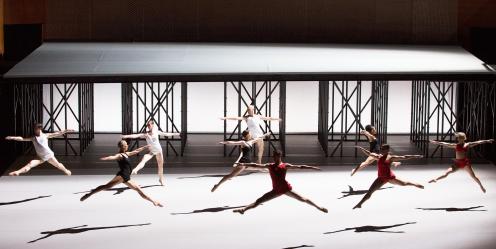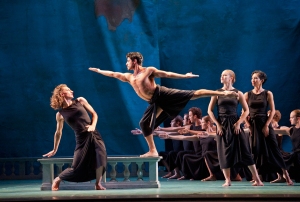Pushing and pulling, Simone Forti and Carmela Hermann Dietrich rejoined in performance to honor their shared journey in dance improvisation. Forti and Herman Dietrich explored their post-modern dance aesthetic with arms and legs intertwined in struggle in a seesaw of layered memories, stories, and political investigations. The warmth, humor, patience, political bent, and personal insights with each other, made it seem like we were in a family living room with old friends, and in a lot of ways we were. The audience was filled with many life-long friends, students, and collaborators. In the black box space of Highways, in Santa Monica, Forti re-engaged with her historic artistic past using seesaws, stories, props, trusting in the moment, and in her relationship with long-time friend and Los Angeles choreographer Hermann Dietrich.

The two dancers enter the theatre, curiously examining the space as if they had never seen it before, whistling as they looked to and fro. Forti sings a lovely song in Italian and accompanies her singing by shaking a cooking pot, her censor, filled with nails (See Saw and Censor, 1961-2017 courtesy of her collection at the Museum of Modern Art, New York). The two dancers roll slowly toward each other and engage in a wrestling tug of war, typical of two kids who want the same toy and they talk while both grasping it. They push and pull, while holding onto each other with hands and feet, finally rolling away. Forti takes shelter in a sawhorse tipped over on its side on a moving-blanket.
Hermann Dietrich takes center stage, shifting from one position to another, with her long arms and legs stretched, reaching into her kinesphere. Each time she changes shape, she looks in a new direction and describes exactly what she sees—a brunette, a light, a piece of dust, tape on the floor. The simplicity is whimsical and lacks pretension. Simon emerges and pulls on a blanket to drag a long plank of wood out to center stage. She remarks about how “it feels good to pull on something,” to push and to pull simultaneously. She begins improvising and telling a story, but she digresses, switching from station to station on a radio, thus seeking for improvisational inspirations. She draws a blank, so Hermann Dietrich takes over, while Forti pushes the board further downstage.
Standing still at a microphone, Hermann Dietrich reads a prepared script reciting a conversation between her deceased mother and herself, quite a different aesthetic than the previous scenes because it lacks in movement or improvisation. Hermann Dietrich asks her mother, who achieved a PhD in political science, for advice about what to do in response to the current political climate. Her mother encourages her to trust herself. This scenario might have been strengthened had Hermann Dietrich improvised to Forti reciting the script, or if she had read and danced the story using some form of cue card or chance system.
Hermann Dietrich speaks about the Cuban military and how they marched with 90-degree battements, perfectly. She marches in place with alert battements. Forti reemerges from her hideout under the sawhorse to talk about twenty-three years of experiments in Philadelphia by Einstein to see if people could be transported through space—and some did not make it. The non-sequiturs revealed moments of memory from prior rehearsals that did not quite gel in this rendition, but it was whimsical nonetheless.
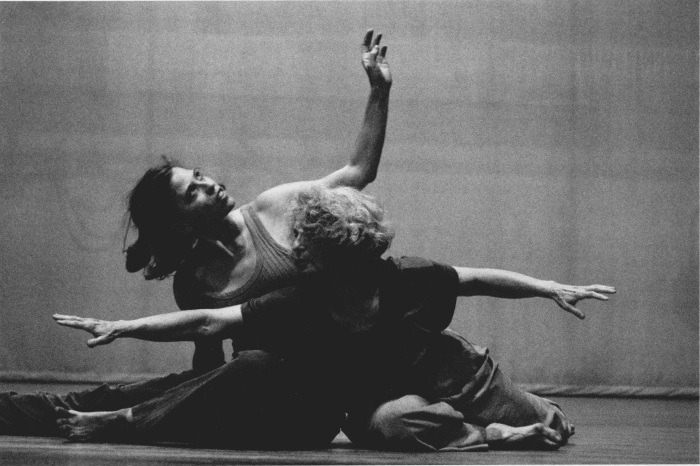
Hermann Dietrich and Forti link and walk in a circle while talking about events in the Honduras, anticipating their recall of their theme for this section, which never comes to fruition. Circling, storytelling, partnering, and walking in a circle while linked was interesting in itself because of who they were together.
They drag the sawhorse to center stage and place the plank atop to make a seesaw. Forti checks to make sure it was carefully centered and safe. Brushing her white hair back to get a better view, she says, “It’s good.”
Forti climbs on to the left side, as a child would, like she must have done many years ago in her original See Saw dance. We hear squeaking swing set sounds, the familiar sounds of a playground. Hermann Dietrich holds her end still, as any good friend would, and leans on it to level the plank. Finally it hovers level with the ground, Forti keeping a toe hold below her. Hermann Dietrich leans forward and rests her elbows, looking straight across at her friend. Forti props her chin on one hand. They look at each other with familiarity, respect, and joy at being able to play together again. Hermann Dietrich shifts her legs and curls up cozily on her side. The two are balanced in space. Hermann Dietrich swings her legs to face Forti and she slides down hill, like on a sliding board, to meet Forti at the bottom. Forti helps her off, and the two leave the playground hand in hand.
Courage to confront the trajectory of life, physical and cognitive limits, and the current political situation transmitted courage to the spectators. Spending an hour or so with post-modern improvisational experts and friends is relaxing and inspirational, and you will probably not see the same performance twice. I saw the Friday December 9th performance. Rematch will be performed again on Saturday the 10th at Highways Performance Space, in Santa Monica.
